How-To Maintain Your Hunting Rifle

Maintaining your hunting rifle isn’t optional—it’s essential for safety, reliability, and accuracy. Left uncleaned or un-inspected, fouling, corrosion, worn parts, or improper lubrication can lead to malfunctions or reduced performance. For example:
- Residue from gunpowder, carbon, or copper fouling accumulates in the bore and chamber; eventually, it can impact accuracy or lead to higher pressures.
- Moisture, sweat, or outdoor exposure (especially after hunting in wet/muddy terrain) can cause corrosion, rust, or compromise moving parts.
- The bolt, receiver, action, and other moving parts require proper lubrication and regular inspection; wear or dirt can interfere with smooth cycling.
In short: A well-maintained rifle is safer to operate, more reliable in the field, and will stay accurate longer.
Basic Maintenance Checklist
Here’s a standard process you can follow. (Always consult your rifle’s manufacturer’s manual for specifics.)
1. Safety first
- Unload the rifle: Remove ammunition and double-check the chamber and magazine are clear.
- Choose a clean, well-ventilated workspace. Keep live ammo away.
- Point the muzzle in a safe direction at all times, even when you believe the gun is cleared.
2. Disassemble / inspect
- Field-strip the rifle as per the manual: remove bolt (if appropriate), open action, remove stock (if needed) or other components.
- Inspect key wear points: bolt face, extractor, firing pin, springs, feed ramp, etc. Replace parts that are worn, chipped, or cracked.
3. Clean the bore
- Use a bore guide (if possible) to protect the crown and chamber when inserting a rod.
- Run solvent-moistened patches through the barrel; use a bore brush if needed to loosen fouling.
- Continue patching until the patch comes out clean. Then run an oil-coated patch or apply a light coating of oil to protect from rust.
- Clean exterior surfaces (barrel, receiver, bolt) with solvent and then wipe dry and apply light oil/protectant.
4. Clean and lubricate moving parts
- After cleaning, apply proper lubricant to rails, bolt, action, hinge points, etc. But avoid over-lubricating — excess oil attracts dirt and lint and can impair function.
- Avoid putting lubricant in the chamber or bore unless for long-term storage (because it could affect pressures when firing).
- Reassemble rifle and perform a function check: cycle action, test trigger (unloaded), ensure everything works smoothly.
5. Storage and periodic maintenance
- After cleaning and lubricating, store the rifle in a secure, dry place. Use a desiccant if humidity is high.
- If the rifle sits unused for a long time, consider running a clean dry patch or light oil through the bore before next use.
- Frequency: clean after every use (especially after hunting or range sessions), and do a light inspection even if rifle sits unused.
Special Considerations for Hunting Rifles
- If you’ve been out hunting in adverse conditions (rain, mud, snow, heavy dust) you should clean more thoroughly—exposure to big-game blood, moisture, or grime demands a full cleaning.
- Wood stocks: If your rifle has a wooden stock, check for cracks or warping; apply wood care (wax, oil) if necessary to prevent moisture damage.
- Metal finish: If your rifle has a special protective finish (e.g., Cerakote), it still needs cleaning and light protection but may resist rust more effectively.
- Accuracy: For rifles used at distance, bore condition matters greatly. Minor fouling may degrade precision.
- Replacement parts: For high-round counts (though hunting rifles may not run tens of thousands of rounds) check springs & bolt parts for fatigue.
Common Mistakes to Avoid
- Skipping safety checks: Assuming unloaded is a big risk.
- Using the wrong caliber cleaning tools: Using the wrong size rod/brush can damage the bore.
- Over-lubricating: Too much oil collects lint/desert grit, which can cause malfunctions.
- Neglecting exterior surfaces: Even if the bore is clean, rust on external metal can degrade the rifle.
- Storing without protection: Leaving the rifle unprotected in a humid environment invites corrosion. Use a case or a gun safe.
- Ignoring small wear: A tiny crack or worn spring can lead to bigger failures later.
Top-Selling Types of Maintenance Products:
Be sure to verify the product will work for your rifle’s specific caliber and type.
1. Cleaning kit for rifles
-
- Includes cleaning rod (or flexible pull-through), bore brush (correct caliber), jags/patches, patches, and solvent-resistant handle.
- Good for general rifle maintenance.
Recommended Product: Otis Gun Cleaning Range Box (Select Your Style)
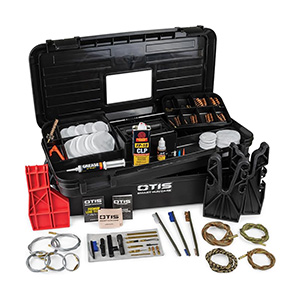
2. Bore brush and bore snake/pull-through cord
-
- These allow you to clean the inside of the barrel more easily, especially if you’ll clean in the field.
- A bore snake is flexible and often fast; a rod + brush is more traditional.
- Using the correct brush material (e.g., brass rather than steel) is advised to avoid damage.
Recommended Product: CLENZOIL Field & Range Cobra Bore Cleaner(Select Your Style)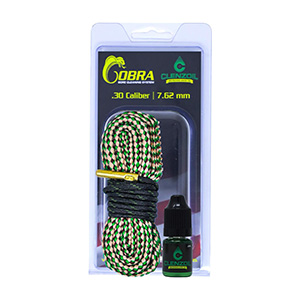
3. Solvent / cleaning chemical
-
- Solvent loosens carbon, powder residue, copper, etc.
- Must be labeled for firearms; ensure you have proper ventilation when using.
Recommended Product: Hoppe’s No. 9 Gun Bore Cleaner
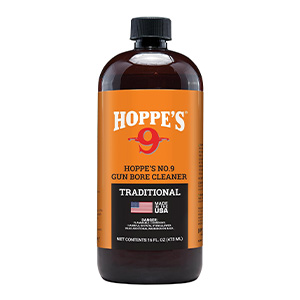
4. Lubricant / protectant oil
-
- After cleaning, you’ll need lubricant for moving parts and protectant for metal surfaces.
- Use manufacturer-recommended oils if possible; avoid over-application.
- Also, protectant cloths or wipes help guard against corrosion.
Recommended Product: Hoppe’s No. 9 Lubricating Oil
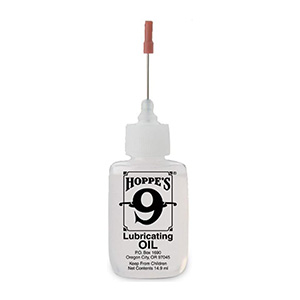
5. Cleaning patches, rods, jags & accessories
-
- Extra patches (cotton or microfiber), jags, loops, brushes for nooks and crannies.
- Having the right size rod and attachments prevents damage.
Recommended Product: Otis Technology Cleaning Patches (Select Your Size)
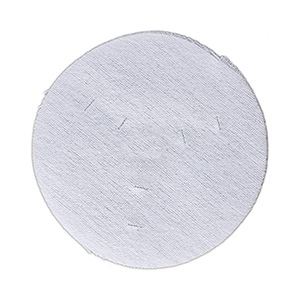
6. Storage / rust-preventant accessories
-
- Desiccant packs for gun safe, silicone cloths, protective covers.
- Especially useful if the rifle will be stored for more than one season.
Recommended Product: Hornady Rechargeable Dehumidifier
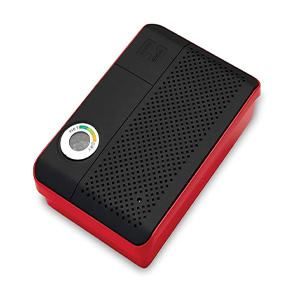
How to Clean Your Rifle
Here’s how you might use the above items in a standard maintenance session:
- Unload rifle and remove ammunition.
- Disassemble according to the manual (remove bolt if bolt action, open receiver, etc.).
- Set-up: Lay parts on a well-ventilated bench, drop live ammo away.
- Using a cleaning rod + bore brush + solvent: Run through barrel from breech if possible; follow with patches until clean.
- Wipe exterior of barrel and receiver with solvent-moistened rag, then dry.
- Apply lubrication to the bolt, rails, and action: use manufacturer-approved lubricant. Use just a thin coat.
- Apply rust-preventant to exposed metal surfaces.
- Reassemble rifle, perform function check (cycle action, check trigger/safety).
- Wipe down the stock and check for any damage.
- Store rifle in a safe, dry location; Consider inserting a clean patch through bore, or mount a desiccant for long-term storage.
Final thoughts
Consistent maintenance of your hunting rifle pays off. Whether it’s a “once-a-year deep clean” or a quick wipe-down after each hunt, establishing good habits means fewer problems, better performance, and safer operation in the field.
If you’re an archery hunter, you may also be interested in our article:
Why Proper Maintenance Matters for Your Compound Bow

